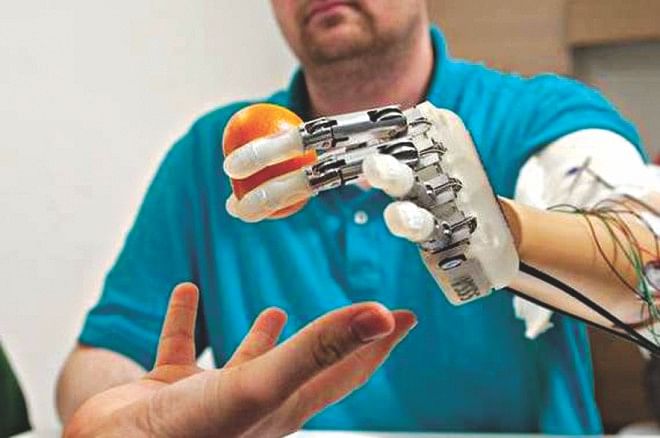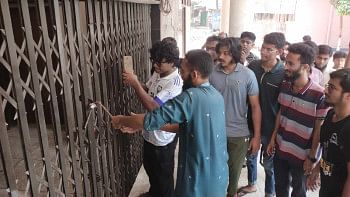First bionic hand that can feel

A prosthetic hand with touch-sensitive fingers has allowed a man to feel objects in his grasp for the first time since he lost his real hand in an accident nearly 10 years ago, scientists said Wednesday.
The amputee was fitted with the “bionic hand” for a month last year, during which time he was able to distinguish between different objects that he held in his grip while blindfolded, the researchers said.
It is the first prosthetic hand that has been able to send sensory information to the wearer's brain via electrodes implanted beneath the skin. Its invention could lead to a new generation of bionic limbs that can provide real-time, tactile information about the surrounding environment.
"This is the first time in neuroprosthetics that sensory feedback has been restored and used by an amputee in real-time to control an artificial limb," said Prof Silvestro Micera of the Ecole Polytechnique Federale de Lausanne in Switzerland.
Dennis Aabo Sorensen, a 36-year-old Danish man who had his left hand surgically amputated following an accident with fireworks in 2004, told The Independent that the prosthetic limb had enabled him to feel objects for the first time since he lost his real hand.
"The idea is that the next implant will be ready within two years and we aim to put the electrodes into the arm for the long term, perhaps months or years, and for everything to be completely portable," Prof Micera said.
The study, published in the journal Science Translational Medicine, demonstrated that it was still possible to transmit the information to the nervous system despite the formation of any scar tissue following the hand's amputation.

 For all latest news, follow The Daily Star's Google News channel.
For all latest news, follow The Daily Star's Google News channel. 



Comments